
So striking, in fact, that I initially mistook their work as being done by the same person. Of course, on closer examination, the nuances of individual style became apparent.
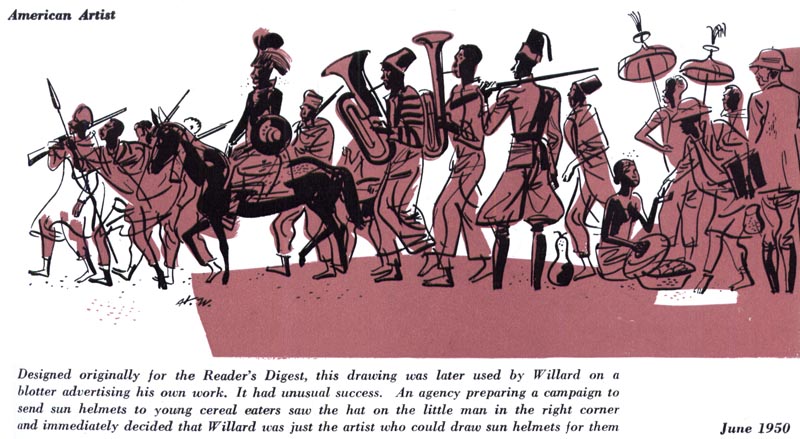
But consider: Shaw had a background in sign painting, and Howard Willard was said to be passionate about typography. It is this calligraphic background that informs the work of both artists and is responsible for what has been described as a "written" line style.
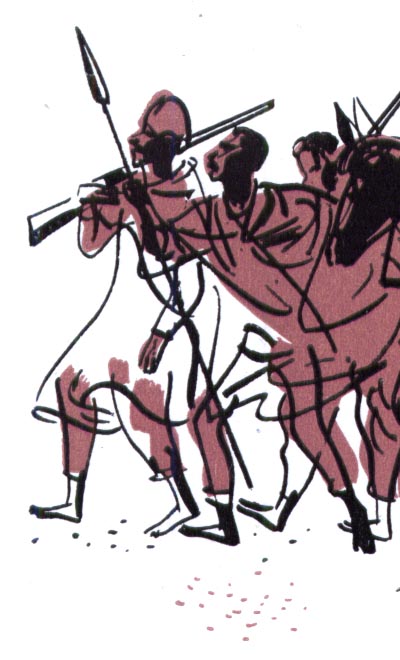
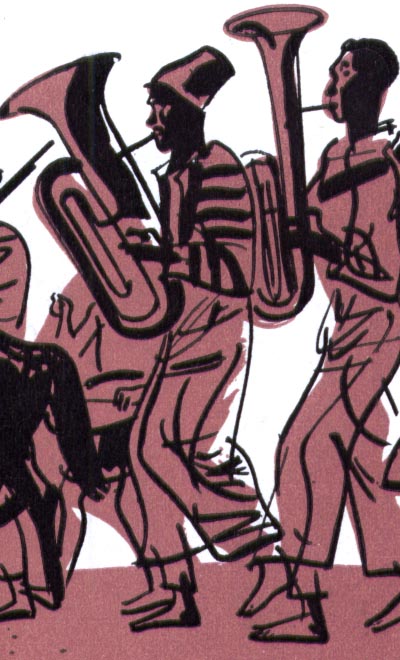
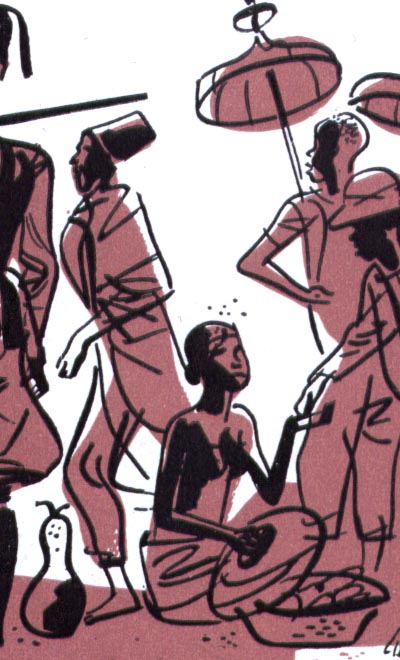
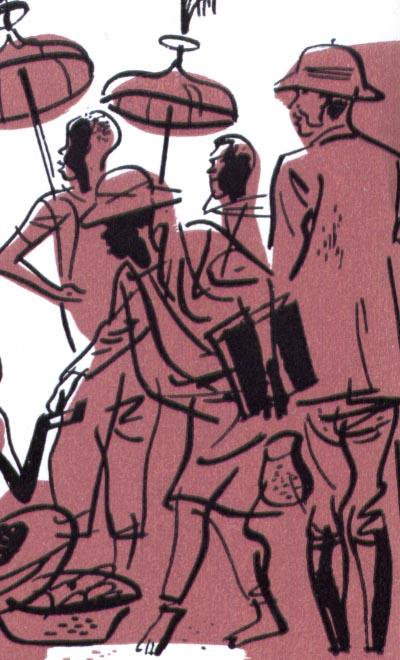
Howard Willard was the subject of an article by Henry C. Pitz in the June 1950 issue of American Artist magazine. This week, we'll take a closer look at what Pitz described as Willard's "nomadic chronology" and how a life of world travel influenced both the style and substance of his art.

This week; Howard Willard's 'written line'.
* My Howard Willard Flickr set.
Hi, Leif,
ReplyDeleteany theories about how these two artists work, regarding materials? For years I have been generating thick-to-thin linework for my editorial illustrations using custom brushes in Painter and Photoshop but have been searching endlessly for the right natural media tool to emulate the results. It seems that Willard and Shaw were using the perfect tools for this - what were they?! Broad tip nibs with india ink? Doesn't seem possible...
Kyle
Willard probably used a variety of dip pens and paint brushes. A good sable brush will give you some amazing lines.
DeleteThe Winsor & Newton Series 7 brushes were often used.
But you need to clean them often and well, because India ink gets into the hairs at the base and it splays out the tip after awhile.
Greetings Leif!
ReplyDeleteHoward's work looks wonderful & like Shaw's, is almost calligraphic in it's appeared sense of spontaneity. Thanks for the intros!
Zach
Leif, Gee, maybe it's time to talk about Wallace Morgan and his drawings skills, again. These fellows are great and the calligraphic nature of their line work is true eye candy, and so hard to do!
ReplyDeleteKyle; I will touch on that tomorrow, though it will be more guess work than concrete answer. Still, I hope it helps a bit.
ReplyDeleteZach; you hit the nail when you said "appeared spontaneity" because of course its the rare case indeed when an artist can create such flawless work spontaneously! Shaw worked straight-to-ink, but threw away five failed pieces for every one that succeeded - and according to Pitz's article, Willard's illustrations "have the look of improvisation [but] are usually the end result of much research, much thought and many sketches."
Chuck; I'm unfamiliar with the work of Wallace Morgan, but as I always say, every day on this blog is a learning experience for me, so I'm happy you mentioned a new name for me to look into!
In today's inspiration's Nov. 21 post,
ReplyDeleteShaw said he used a series 7 #3 watercolor brush for the on the spot
drawings.
Dang! - you beat me to it Harold, but yes - I was going to say that I bet Willard (as well as Shaw) would consider a W&N Series 7 No. 3 Sable to be an essential tool for anybody planning to sling ink.
ReplyDeleteShaw and this guy both knock me out--- I 'm going to do a comic book story like this one day.
ReplyDeleteGreat stuff, thanks for sharing as always!
ReplyDeleteGreat work!
ReplyDeleteAnd, great work on your part, Detective Peng!
Thanks so much, Mr. King! :^)
ReplyDeleteYou know writing is also an art and you need to get much inspiration to create something really worthwhile. Sometimes is even harder to finish than to start. So, think some writers will find this conclusion generator tool useful.
ReplyDeleteA new type of investment That is ready to make money continuously With the best casino services.
ReplyDeleteเว็บคาสิโนไม่ผ่านเอเยนต์
บาคาร่าเครดิตฟรี
ป๊อกเด้ง เล่นยังไง